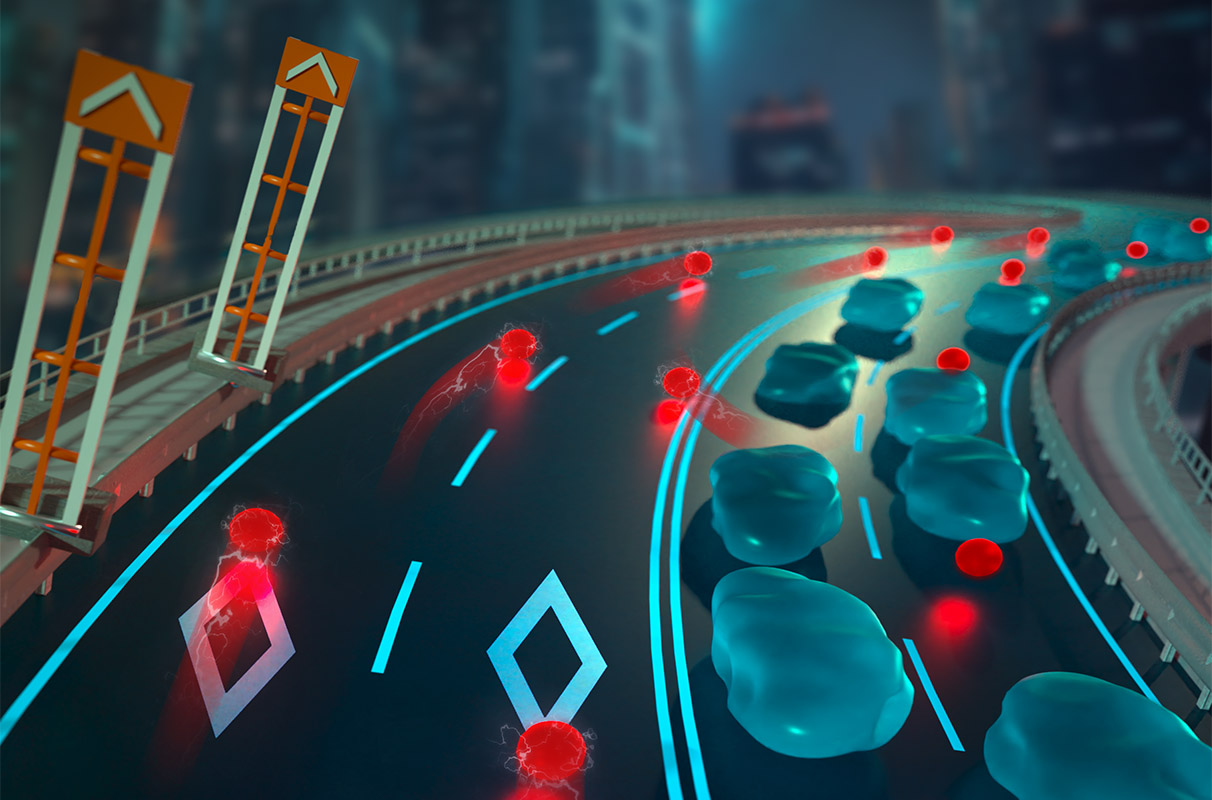In organic conductors where charge is carried by both electrons and ions, scientists have discovered a way to make the ions move more than ten times faster than in comparable ion-transport methods. The results could apply to a host of areas, including improved battery charging, biosensing, soft robotics, and neuromorphic computing.
Organic mixed ionic-electronic conductors (OMIECs) combine the advantages of the ion signaling used by many biological systems with the electron signaling used by computers. However, exactly how these conductors coordinate movement of both ions and electrons has not been well understood.
“Being able to control these signals that life uses all the time in a way that we’ve never been able to do is pretty powerful,” said Brian Collins, WSU physicist and senior author on the study. “This acceleration could also have benefits for energy storage, which could be a big impact.”
Collins and his colleagues observed that ions in OMIECs moved slowly relative to electrons. Because of their coordinated movement, the slow ion movement also slowed the electrical current. To solve this problem, the researchers created a straight, nanometer-sized channel just for the ions, which moved through the channel more than ten times faster than they would through water alone.
At the Advanced Light Source (ALS), resonant soft x-ray scattering (RSoXS) at Beamline 11.0.1.2 was used to explore the interplay between the superhighway effect and the internal nano-morphology of the channel.
Gated access to the channel was achieved by lining it with hydrophilic molecules, which attracted ions dissolved in water. Chemical reactions could turn this attraction off, opening and closing the channel, much the same way that biological systems control access through cell walls.
The team also created a sensor that could quickly detect a chemical reaction near the channel, creating an electrical pulse that a computer could read. This detection ability on a nanoscale could help with sensing pollution in the environment, or neurons firing in the body and brain, one of many potential uses of the development.
“The next step is really to learn all the fundamental mechanisms of how to control this ion movement and bring this new phenomenon to technology in a variety of ways,” said Collins.

T. Khan, T. McAfee, T.J. Ferron, A. Alotaibi, and B.A. Collins, “Local chemical enhancement and gating of organic coordinated ionic-electronic transport,” Adv. Mater. 37, 2406281 (2025), doi:10.1002/adma.202406281.
Adapted from the Washington State University press release, “New ion speed record holds potential for faster battery charging, biosensing.”